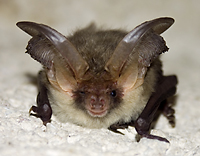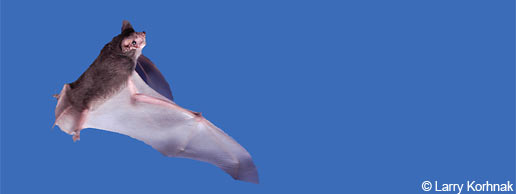BATS: Our unexpected ally

Q: Do they really want to suck your blood?
A: No!
Bats are often associated with Vampires and other scary Halloween stories, but is that fair?
How much do you really know about bats?
BAT FACTS!
- Bats are actually harmless creatures that are important parts of our environment. Bats are the only flying mammal and have well-furred bodies with naked, transparent wings. Their wings are a membrane spread across elongated arm bones and fingers. On average, bats fly at a speed of 20 wing beats per second.
- Bats are nocturnal (active at night), leaving daytime roosts such as trees, caves or buildings at dusk. Upon leaving their roost, bat fly to a stream, pond, or lake where they dip their lower jaw into the water while still in flight and take a drink. After drinking bats forage for insects. All Florida bats are insectivorous and feed on mosquitoes, flies, leafhoppers, beetles and many other insects. Each bat is estimated to eat its weight in food every night.
- To find insects, bats use echolocation, a sophisticated sonar system. While flying, bats emit a continuous series of supersonic sounds through their nose or open mouth. The sounds bounce off objects and are picked up by the bats' sensitive ears. Echolocation allows bats to detect even slight movement. Once they locate their prey, bats can capture it with the mouth, wings or tail membranes.
- Bats are long-lived with a life-span of 20+ years. They mate in the fall and produce 1 to 2 babies in the spring. Babies are flightless and remain in the roost until the end of August. The myth that bats are major carriers of rabies is untrue; less than 1/2 of 1 % of bats carry the rabies virus. Unlike other rabies-carriers, bats that do have rabies will most likely become paralyzed and die quietly.
Florida has fourteen species of bats:
- Eastern Yellow Bat (Lasiurus intermedius): This large, yellow-brown bat is common across the entire state of Florida, occurring in wooded areas. Although mostly solitary, they may be seen in groups. They roost in Spanish moss occurring in trees.
- Seminole Bat (Lasiurus seminolus): This medium sized, mahogany brown bat, is common in north and central Florida. This species is also found roosting in Spanish moss, singly or in small groups.
- Big Brown Bat (Eptesicus fuscus): Although this large, brown bat occurs throughout the United States, it is considered rare in Florida. As one of the fastest flying bat species, it reaches speed of 40 miles per hour. It can be found roosting in caves and tree cavities.
- Eastern Pipistrelle Bat (Pipistrellus subflavus): This is the smallest bat in the East. It is reddish to light brown and hangs in trees during the day.
- For more Florida bat species, read the Bats of Florida document.
Other websites of interest:




 Location: http://yourdomain.edu
Location: http://yourdomain.edu